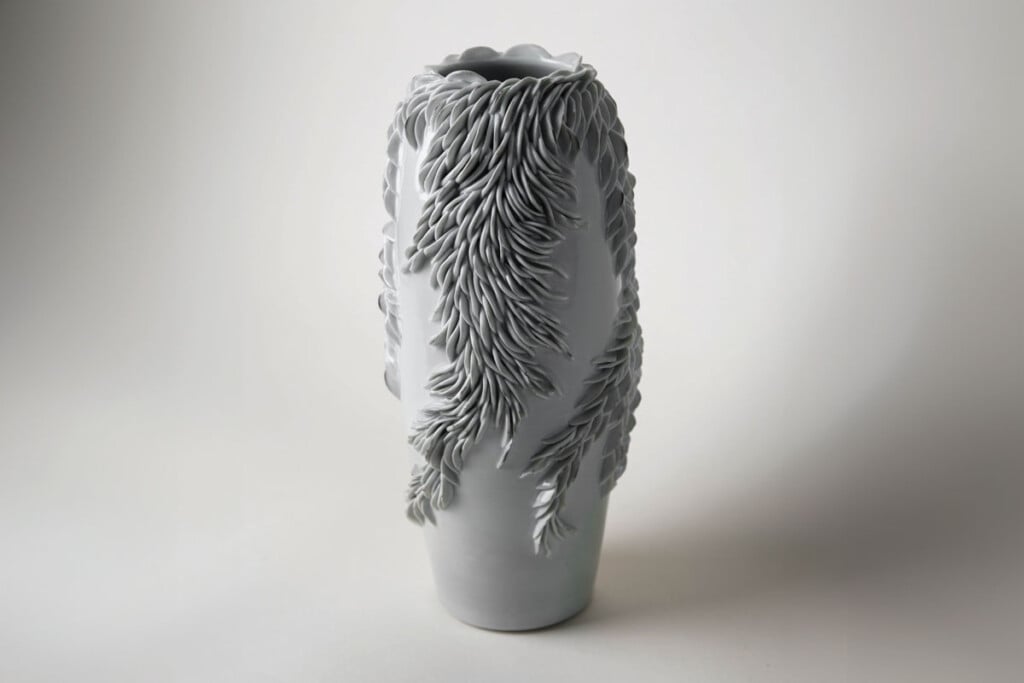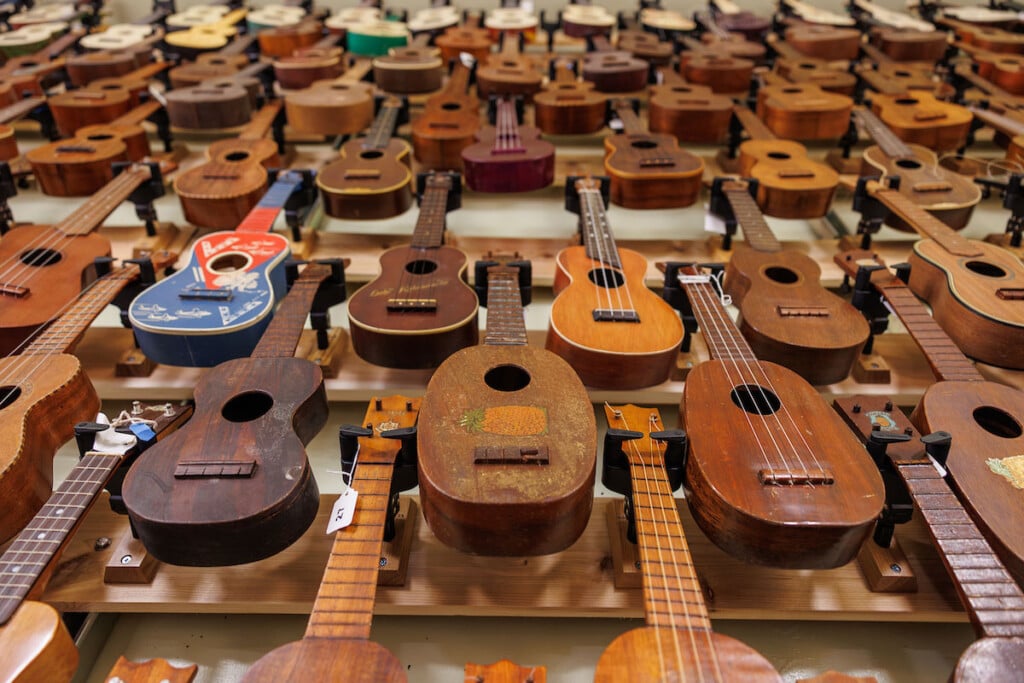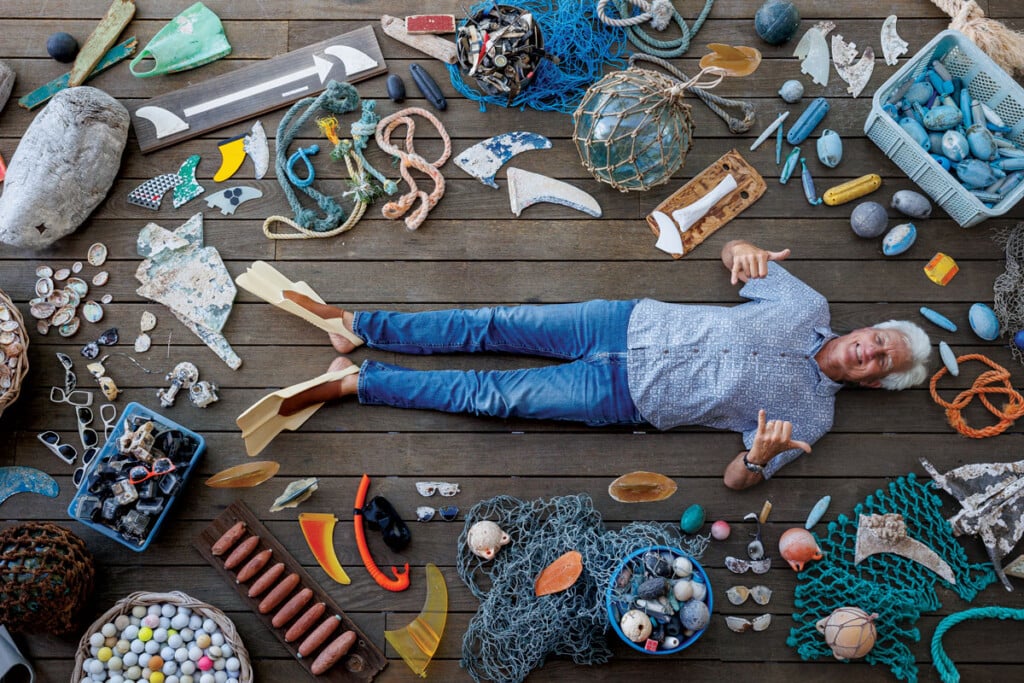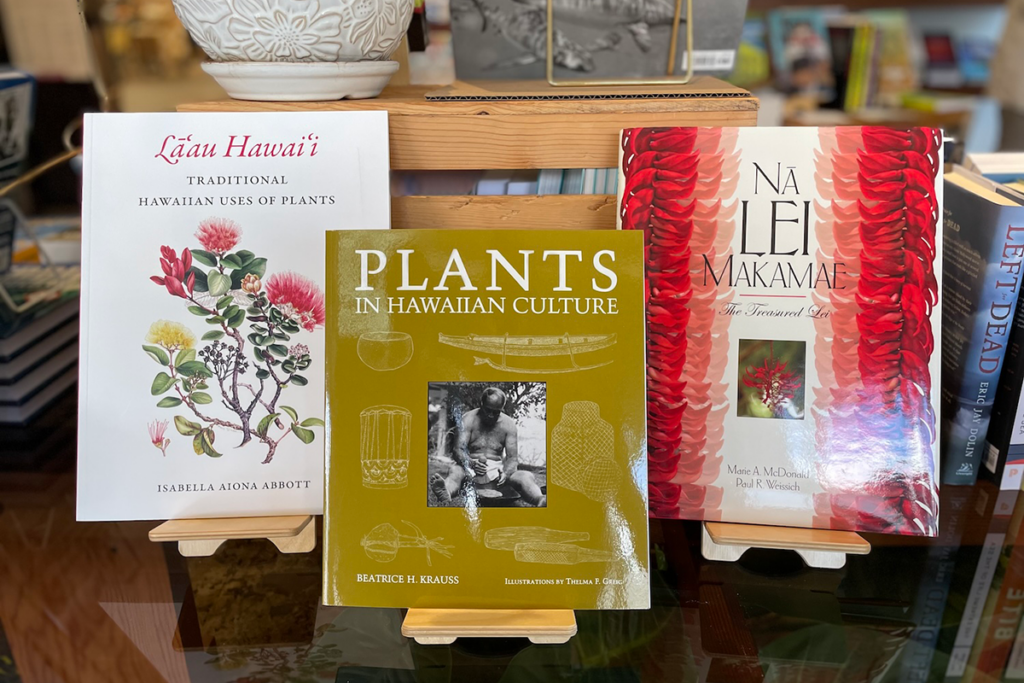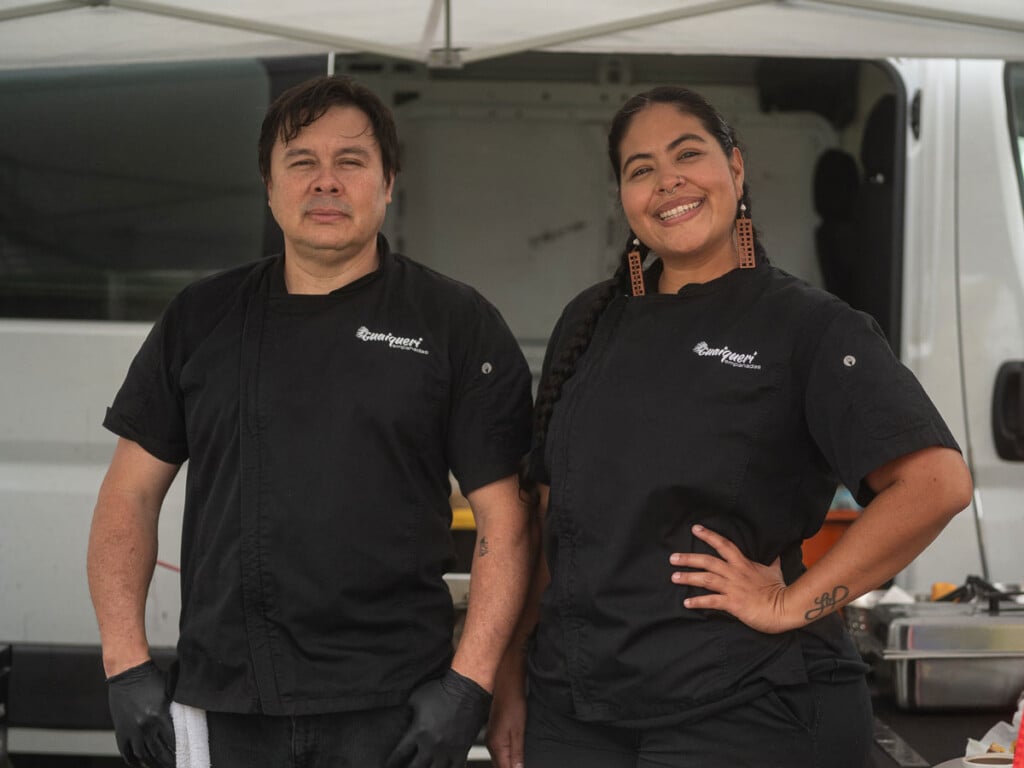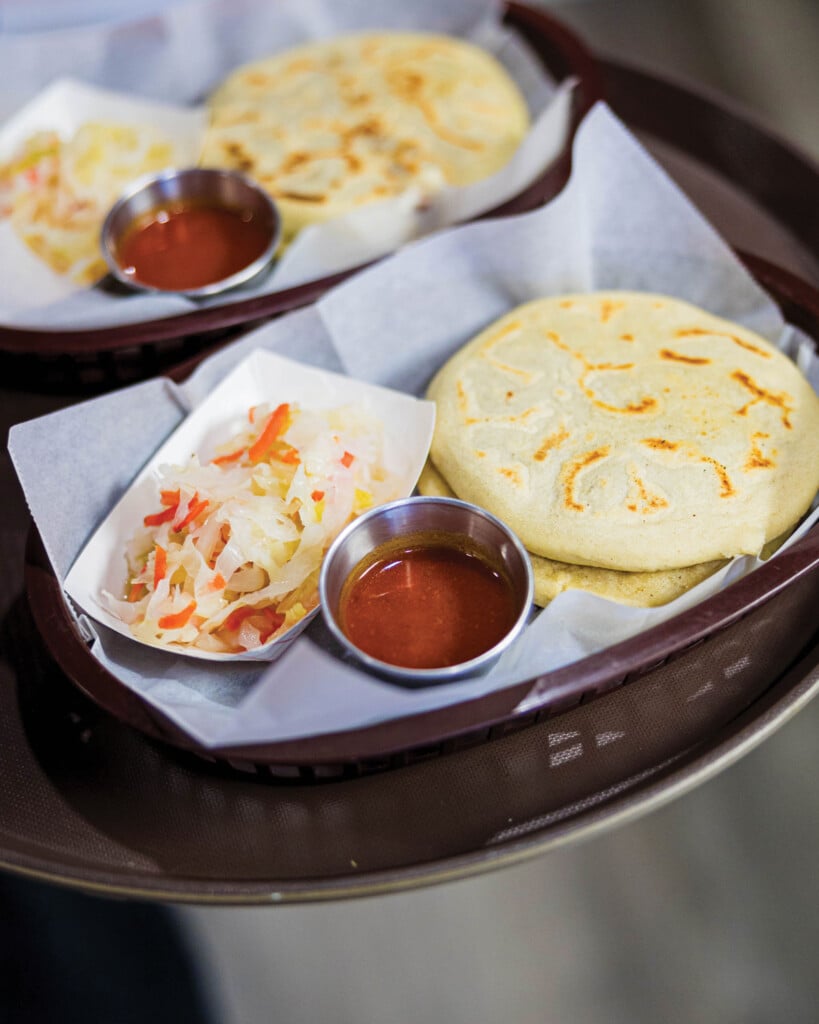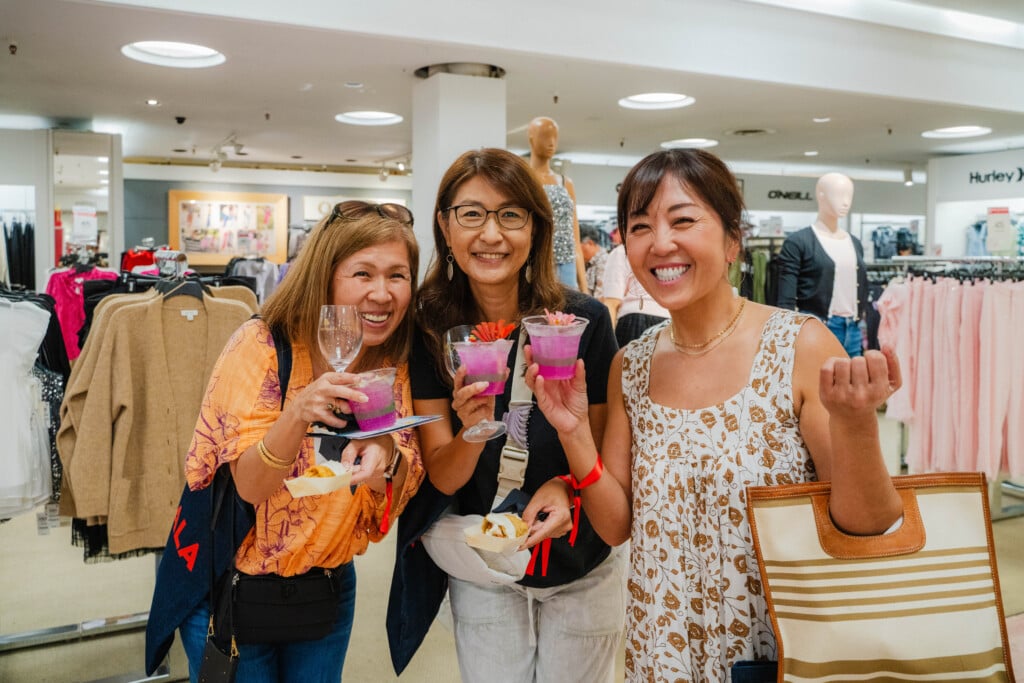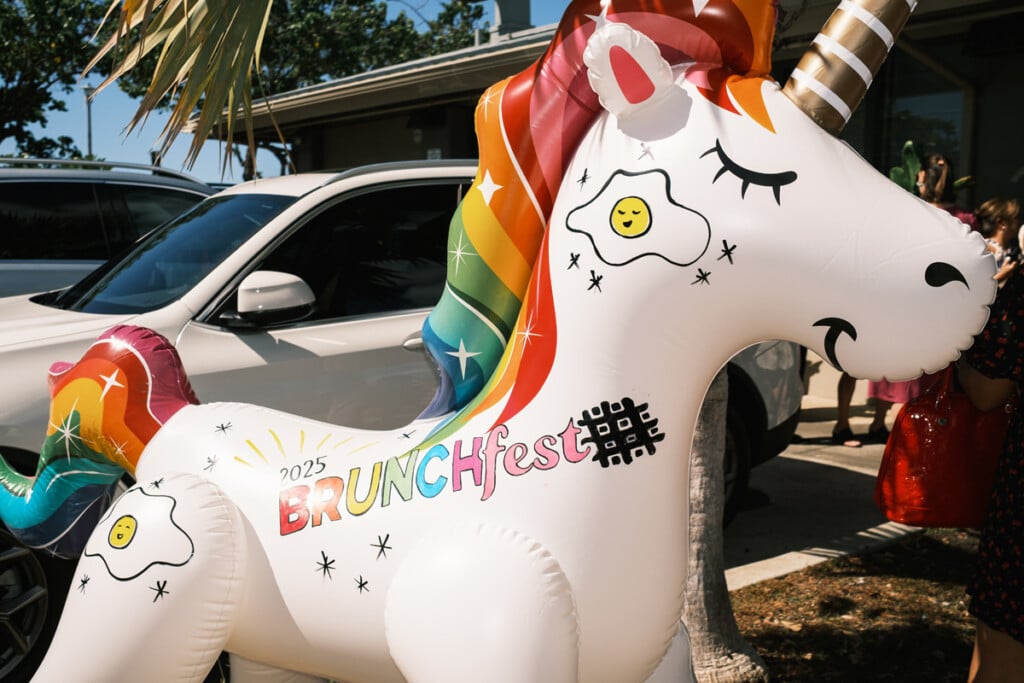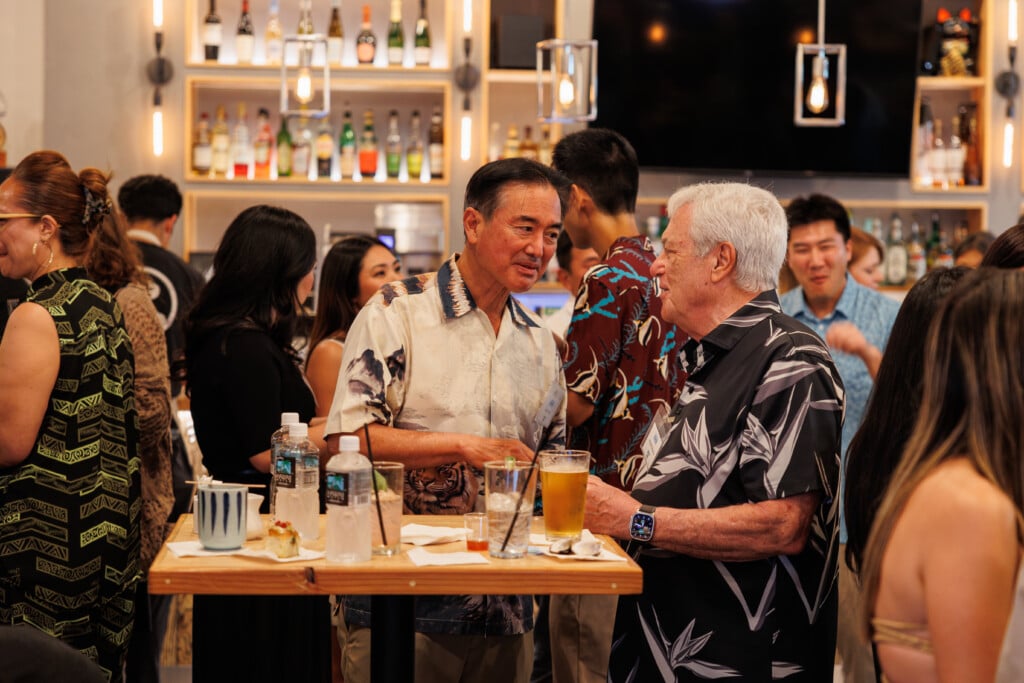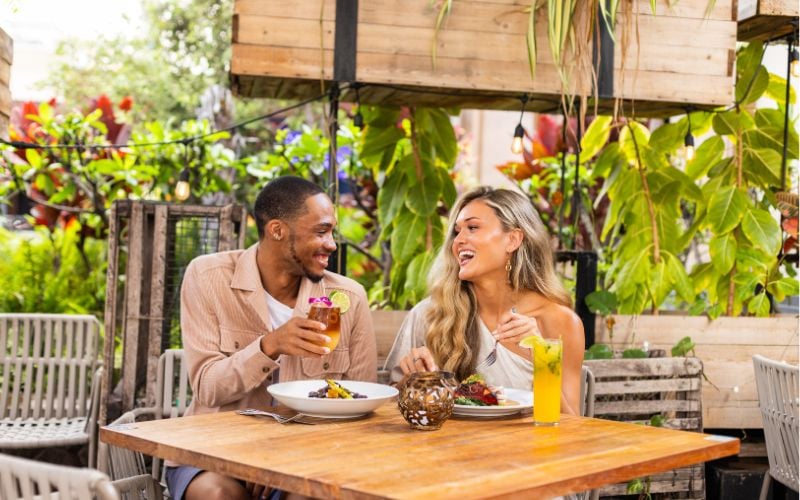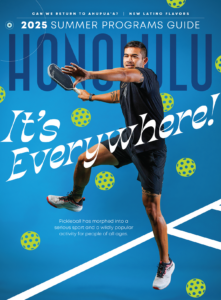Renowned Merrie Monarch Festival Returns to the Stage this July in Hilo
After suddenly being forced to cancel in the early days of the pandemic, the festival returns to the joy of both hālau and fans. But there are big changes to the cultural celebration, often known as the Olympics of Hula.

Taizha Keakealani Hughes-Kaluhiokalani of Hālau Hi‘iakaināmakalehua was crowned Miss Aloha Hula 2019. This year, seven women will compete for the coveted title. Photo: Courtesy of Merrie Monarch Festival
… since kumu hula Meleana Manuel and her hālau have danced together in person. On this chilly Tuesday night in March, though, Manuel’s haumāna (students) reunite in an empty restaurant parking lot in Volcano to rehearse for the much-anticipated return of the Merrie Monarch Festival. The reunion will be momentous for another reason: For the first time, Hālau Hula Ke ‘Olu Makani O Mauna Loa will grace the stage at Hilo’s hallowed Edith Kanaka‘ole Stadium. It’s been a long time coming.
“We wanted to make sure it would be safe to do this.”
— Luana Kawelu, festival president
Tonight’s a breezy 57 degrees, but Manuel jokes, “We are all mountain girls, so it’s all OK.” Most of the women don black long-sleeve shirts and leggings. All are wearing black masks and white pā‘ū and adorned in lei po‘o (lei worn on head) and kūpe‘e (on wrists and ankles) made from palapalai. They cut a striking image in the sea of darkness.
Manuel starts with an opening oli and transitions to the ka‘i (entrance dance), while the women dance forward to their spots, all 6 feet apart. They’ve had to redo this part several times, often explaining the changes in detail over the phone and by text and email. Manuel’s original vision wouldn’t work with the spacing that festival organizers requested.
“It’s a little intimidating because practicing closer together is comforting,” she tells the hālau. There are no lines or tape on the ground. They work from memory. They repeat it a few times. By the fourth try, they’ve got it.
“That was much better,” Manuel reassures the group.
For many hālau, this is what Merrie Monarch practice looks like these days—held outside in parking lots and driveways, half on Zoom, half in person, with masks and physical distancing. Six months after the renowned festival was canceled last year, just six days after the first COVID-19 case was reported in Hawai‘i, organizers began working toward a June comeback. With a host of new COVID-19 rules, including the absence of thousands of cheering fans and no live performances by favorite Hawaiian musicians, just 15 hālau entered this year (instead of around 20 in previous years). There will be 11 wāhine and eight kāne performances, as well as seven Miss Aloha Hula entrants. While the new rules are sweeping and unprecedented, and groups have had only a few months to adjust to them, organizers, kumu hula and hālau are working it all out, doing whatever it takes to ensure the Merrie Monarch, and hula itself, lives on.
SEE ALSO: Hālau, Artisans and Hula Community Still Dealing With Merrie Monarch Cancellation

Miss Aloha Hula 2019 Taizha Keakealani Hughes-Kaluhiokalani danced to “‘Akahikuleana A Ka Piko” for her ‘auana number. Expression is one of the most captivating and important parts of hula. To ensure that the judges can see the nuances of each hālau’s expressions, dancers will be allowed to remove their masks during their performances, but must wear them before and after. Photo: Courtesy of Merrie Monarch Festival
A Return to Hilo
Planning the Merrie Monarch during a pandemic is no small feat. Festival president Luana Kawelu and an army of volunteers began meeting in September with county officials and three doctors, who serve as medical advisers. After much deliberation and feedback from kumu hula and judges, Kawelu announced in March that the Merrie Monarch would be held at the Edith Kanaka‘ole Stadium from June 24 to 26.
“This is the home of the Merrie Monarch,” Kawelu says. “The hālau feel this is where Merrie Monarch started, and they want to return to Hilo.”
To make that dream a reality, organizers developed strict protocols that were approved by the county. The biggest change for the event? No live audience. Music for ‘auana (modern dance) night will also be prerecorded, not live. And organizers cut the number of dancers allowed per group from 35 to 20 this year. Kawelu says the fewer people in the stadium, the better.
Based on recommendations from the three Hilo doctors, two of whom have attended the Merrie Monarch for more than 25 years, the festival will require hālau to isolate together for five days after arriving in Hilo. On the fifth day, they will take COVID-19 tests before entering the stadium grounds. If just one person tests positive, the entire hālau is out. All hālau and judges will also need to do daily screenings, which include temperature checks and questionnaires, with an on-site team from The Queen’s Medical Center.

In 2019, Kumu hula Kaleo Trinidad’s Ka Leo O Laka I Ka Hikina O Ka Lā placed first in kāne kahiko and also won first place overall in the kāne division. This year, 15 hālau will grace the stage at the Edith Kanaka‘ole Stadium in Hilo. “Ka Ua I Hāmākua.” Photo: Courtesy of Merrie Monarch Festival
Kawelu and organizers also had to rethink the entire lineup to allot an additional 13 to 15 minutes in between every hālau appearance for a full disinfecting of the stage, microphones and dressing rooms. The first time dancers step on stage will be in front of cameras—stage rehearsals in the stadium are not allowed. Additionally, everyone must wear masks before and after their performances. Even the decision of when the festival will air was carefully thought out. Since live broadcasts require bigger production crews, the performances will instead be recorded and aired the next week, July 1 to 3, on K5.
“We wanted to make sure it would be safe to do this,” says Kawelu, who hopes the festival can return to normal in 2022. “We’ve been meeting so many times with our committee, and then what comes out of that, I bring it up to the kumu hula and judges. They know what they have to do for this to become a reality.”
SEE ALSO: Quote Unquote: What It’s Really Like Organizing the Merrie Monarch Festival
The program will be similar to previous years, with the Miss Aloha Hula competition on the first night, followed by group kahiko (ancient) style dance and ‘auana the following two nights. Plastic barriers will separate all seven judges (two alternates will stand by), who are required to wear masks. Typically positioned at the foot of the stage, the judges’ table may move based on which way the wind is blowing to keep them upwind of the chanting and dancers.
For Maelia Loebenstein Carter, a festival judge since 2018 and kumu hula of Ka Pā Hula O Kauanoe O Wa‘ahila, having the judging live was important. She once evaluated another hula competition projected on a screen from four camera angles but says nothing compares to seeing hula performed live, to feel a hālau’s energy and to see the nuances of the dancers’ expressions.
As many in the hula community know, changes are bound to happen. But they are willing to make it work.
“We’re doing what we need to do,” Loebenstein Carter says. “My grandmother (renowned kumu hula Mae Ulalia Long Loebenstein) would always be the one to say, we are hula people. We don’t have just a plan B. We have the whole alphabet of backup plans.”
A Different Path

Kumu hula Tracie and Keawe Lopes of Ka Lā ‘Ōnohi Mai o Ha‘eha‘e are excited to return to the Merrie Monarch Festival this year. Photo: Courtesy of Merrie Monarch Festival
“Our first priority is the love that we have for hula and what hula means for us internally rather than externally,”
— Kumu hula Keawe Lopez
C
hanging and adapting has been the nature of life for many kumu hula in the past year. Tracie and Keawe Lopes took Ka Lā ‘Ōnohi Mai o Ha‘eha‘e online when the state shut down. For nearly a year, hula lived on through the computer screens of their haumāna until the couple held their first in-person practice with their Merrie Monarch line in mid-March. That meant developing new COVID-19 protocols, including temperature checks and health screenings.
The Lopeses are bringing a smaller group than in previous years because some of their dancers couldn’t make it. During rehearsals, wearing masks while dancing 6 feet apart is different and difficult. (Mask breaks are also a thing now—there were at least five during their first practice.) While it feels different with fewer people, one thing the couple isn’t too concerned about is a lack of cheers and energy from a live audience.
“Our first priority is the love that we have for hula and what hula means for us internally rather than externally,” Keawe Lopes says. “The audience is just an extra layer.”
And although there isn’t the usual hugging and kissing at hula practice, the joy of simply being together again, of seeing each other in person, erases the physical distance.
“Merrie Monarch is not just an event that comes and goes. It’s a lifeline for many people,” Tracie Lopes says. “To bring life back to it is our main purpose. For hula practitioners, this is part of the blood that flows through our veins.”
It’s the same sentiment echoed by many others, including kumu hula ‘Iliahi Paredes. He and his wife, Haunani, have brought Hālau Kekuaokalā‘au‘ala‘iliahi to Merrie Monarch every year since 2012. This year, they are bringing a smaller wāhine and kāne group, and no Miss Aloha Hula contestant.
“One of the reasons we’re doing this is we want to let the world know that we can still dance,” Paredes says. “Hula has to live on.”

After nearly a year of virtual classes, kumu hula Tracie and Keawe Lopes held their first in-person practice with their Merrie Monarch line in mid-March. Photo: Courtesy of Merrie Monarch Festival
But training for the festival couldn’t be the same. With masks, it’s difficult to see how their students’ faces convey the story of each mele. Paredes expects his dancers to learn to share emotion while they’re dancing with masks to avoid not having any expression during Merrie Monarch. It’s a delicate balance because he also doesn’t want them to exaggerate their expressions to compensate for the coverings. It’s a learning experience for everyone.
And added safety measures are now part of the preparations. To help prepare dancers mentally and physically for the festival, kumu hula typically place a kapu on certain activities and foods. This year, Paredes is also asking his haumāna to self-isolate as much as possible two weeks prior to the festival to increase the odds that everyone tests negative. He says that, plus making sure the hālau has safe flight and transportation arrangements from Maui to Hilo, is “weighing heavy on my heart.”
“That’s stuff that we never thought about before,” he says. “This is a brand-new experience for all of us.”
It’s a brand-new experience for kumu hula Manuel, too, and her hālau. Although the dancers have performed at several hotel and craft fair shows during Merrie Monarch week, this will be the first time they’ll step on stage as entrants.
The journey hasn’t been easy. When Manuel resumed in-person rehearsals earlier this year, she had to split the line in half so they wouldn’t violate Hawai‘i County’s social gathering rule. That meant that half of the women met in person, often in a driveway, empty parking lot or wherever they could find outdoors, while the other half watched on Zoom. That split was very difficult, particularly because hula relies so much on the dancers’ connections with their hula sisters, brothers and kumu.
But some of the new rules are actually proving beneficial to the art. Because the dancers are wearing masks, they have to chant even louder and enunciate clearer, she says. That pushes their diaphragms to exert more sound and ‘i‘i (trill).
“We never stopped believing [that Merrie Monarch would return]. Everybody is super excited,” Manuel says. “I’m really proud of these women. They equally share the responsibilities of this journey we’re on. Every day is a different challenge.”
While Kawelu acknowledges that the rules this year are strict, she says safety must come first and participants agreed to these arrangements. Although plans have to be somewhat fluid, depending on the COVID-19 situation in June, she looks forward to hosting the event again in Hilo.
“This will strengthen and heal us during this time,” Kawelu says. “It represents so much of who we are as a people and the love and resilience of our traditions.”


